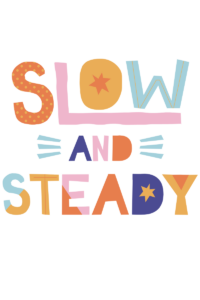How can we refine our approach to ensure students develop fluency in ways that stick?
How Do We Get There?
First and foremost, I recommend you start with a fluency check of your classroom. Not for the students but for you. What does fluency look like in your teaching? Where are areas that you can improve and where are others that you’re strong in? Both matter. I have a FLUENCY SCORECARD here for you to sorta check yo’self.

After reflection, it’s on you
Next, YOU have to learn the strategies. Listen many of these you may already have in your math tool belt. But the others? You gotta learn them.
I get it. Math can be scary, as can new methods or strategies. But how can we genuinely ask our students to demonstrate and practice a math method if we don’t know it ourselves?
Several teachers I have worked with shared that their students became more confident in explaining their reasoning, often surprising themselves with the connections they made. You can do the same. These discussions help students see the numbers’ flexibility and make math feel less intimidating. Trust the process.
So which strategies work?
Teachers found success by prioritizing foundational strategies that help students think flexibly about numbers.
Strategies for addition and subtraction like:
Count On/Back
MakeTens
Partial Sums and Differences
Compensation
Think Addition
When Algorithms Are Needed
Strategies for multiplication and division like:
Break Apart To Multiply
Compensation
Doubling and Halving
Partial Products
Think Multiplication
Partial Quotients
To algorithm or not to algorithm?
As mathematicians, we should be able to distinguish when an algorithm is needed and when it is not.
Drawing from the Figuring Out Fluency book series,
For example, a 2nd-grade teacher shared how using the make-a-ten strategy transformed how her students solved problems like 8 + 6.
Instead of relying on rote memorization, students learned to break 6 into 2 and 4, add 8 + 2 to make 10, and then add the remaining 4.
Hello, people; this is the same principle used for decimals. I don’t care if you don’t teach decimals, but those upper elementary teachers that you are supporting do.
A problem like 0.8 + 0.6.
Instead of relying on rote memorization, students learned to break 0.6 into 0.2 and 0.4, adding 0.8 + 0.2 to make 1.0, then adding the remaining 0.4.
This strategy strengthens their number sense and improves their accuracy and efficiency, which are components of true fluency.

Some challenges along the way…
I’m not going to make pretend this process is easy. Is anything really easy when it comes to building Number Sense and Fluency? Here’s what can trip you up…
Time Constraints Can Be A Pain
You are most likely overwhelmed. Finding time to create meaningful fluency activities can be impossible between curriculum demands, administrative tasks, and large class sizes. This has led many to turn to pre-made solutions, which aren’t always aligned with best practices. We tend to pick out activities that look cute but have no value. So, at the very least, vet your pre-made materials.
Misconceptions About Fluency Also Suck
Despite progress, fluency still needs to be equated with speed. Timed tests and “fastest answer” competitions can leave students—parents—and you—feeling defeated.
Fluency is about much more than speed; it’s about flexibility, efficiency, and accuracy. However, changing this mindset requires consistent effort and intentional messaging.
So To Wrap Up This Thing Up
I invite you to pause and reflect:
- What fluency strategies have worked with in your classroom?
- What fluency strategies do you need to dig into and try out?
- Which fluency strategies work well for your students?
- Where do you see room for growth?
- How can you celebrate mathematical thinking in your classroom?
These reflections are the first step toward meaningful change.
Want to dive deeper? Check out my books. Yes, pre-made materials can be meaningful.
I also host free webinars where we’ll explore these fluency-building strategies in detail. Be on the lookout for those and the resources I share to make your math lessons even more engaging. Those are typically shared in my newsletter, which you can sign up for HERE.
We can help our students and ourselves grow transformative fluency! Bet!
Blog Teacher Workload Is Destroying Education
Books
Figuring Out Fluency -Whole Numbers Addition and Subtraction
Figuring Out Fluency- Whole Numbers Multiplication and Division

